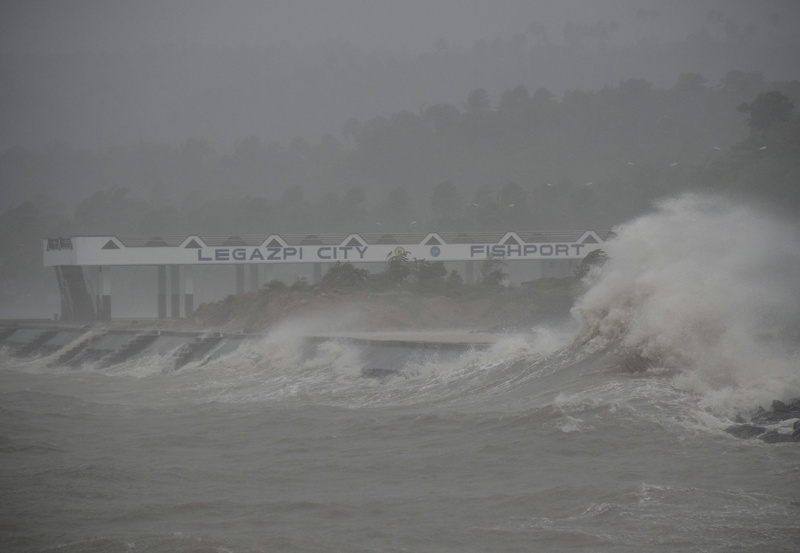MANILA, Philippines — One of the strongest storms on record struck the central Philippines, killing at least four people, forcing hundreds of thousands from their homes and knocking out power and communications in several provinces. But the nation appeared to have escaped a major disaster because the rapidly moving typhoon blew away before wreaking more damage, officials said.
Typhoon Haiyan left the Philippines early Saturday on a path toward Southeast Asia, the U.S. National Oceanic and Atmospheric Administration tweeted. Forecasters said the storm was expected to pick up renewed strength over the South China Sea on its way toward Vietnam.
Nearly 750,000 people in the Philippines were forced to flee their homes.
Weather officials said Haiyan had sustained winds of 147 mph with gusts of 170 mph when it made landfall. By those measurements, Haiyan would be comparable to a strong Category 4 hurricane in the U.S., nearly in the top category, a 5.
Hurricanes, cyclones and typhoons are the same thing but called different names in different parts of the world.
Because of cut-off communications in the Philippines, it was impossible to know the full extent of casualties and damage. At least two people were electrocuted in storm-related accidents, one person was killed by a fallen tree and another was struck by lightning, official reports said.
Southern Leyte Gov. Roger Mercado said the typhoon ripped roofs off houses and triggered landslides that blocked roads.
The dense clouds and heavy rains made the day seem almost as dark as night, he said.
“When you’re faced with such a scenario, you can only pray, and pray and pray,” Mercado told The Associated Press by telephone, adding that mayors in the province had not called in to report any major damage.
“I hope that means they were spared and not the other way around,” he said. “My worst fear is there will be massive loss of lives and property.”
Eduardo del Rosario, head of the disaster response agency, said the speed at which the typhoon sliced through the central islands – 25 mph – helped prevent its 375-mile band of rain clouds from dumping enough of their load to overflow waterways. Flooding from heavy rains is often the main cause of deaths from typhoons.
“It has helped that the typhoon blew very fast in terms of preventing lots of casualties,” regional military commander Lt. Gen. Roy Deveraturda said. He said the massive evacuation of villagers before the storm also saved many lives.
The Philippines, which is hit by about 20 typhoons and storms a year, has in recent years become more serious about preparations to reduce deaths. Public service announcements are frequent, as are warnings by the president and high-ranking officials that are regularly carried on radio and TV and social networking sites.
President Benigno Aquino III assured the public of war-like preparations, with three C-130 air force cargo planes and 32 military helicopters and planes on standby, along with 20 navy ships.
As relief workers began assessing the damage, U.S. Secretary of State John Kerry said that America stood ready to help.
“Having so recently had my own visit to the Philippines prevented by another powerful storm, I know that these horrific acts of nature are a burden that you have wrestled with and courageously surmounted before. Your spirit is strong,” Kerry said in a statement.
Among the evacuees were thousands of residents of Bohol who had been camped in tents and other makeshift shelters since a magnitude-7.2 earthquake hit the island province last month.
Copy the Story LinkSend questions/comments to the editors.



Success. Please wait for the page to reload. If the page does not reload within 5 seconds, please refresh the page.
Enter your email and password to access comments.
Hi, to comment on stories you must . This profile is in addition to your subscription and website login.
Already have a commenting profile? .
Invalid username/password.
Please check your email to confirm and complete your registration.
Only subscribers are eligible to post comments. Please subscribe or login first for digital access. Here’s why.
Use the form below to reset your password. When you've submitted your account email, we will send an email with a reset code.